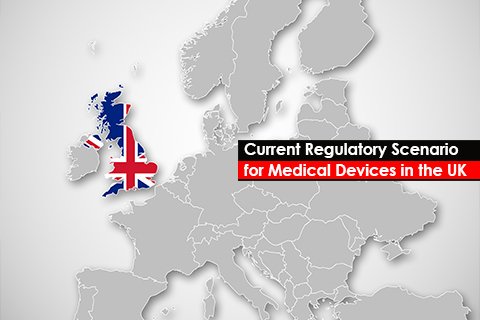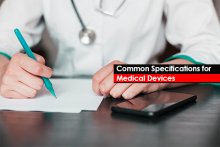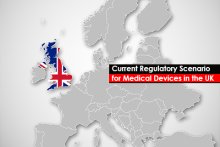The current Regulatory scenario for medical devices in the UK is governed by the Medical Device Regulation 2002 (SI. 2002 No. 618, as amended), also known as the UK MDR, 2002. This framework was originally based on the European directives, but following the UK’s exit from the European Union (EU), there have been changes to how medical devices are regulated in Great Britain (GB), comprising England, Wales, and Scotland.
Here are the key aspects dominating the current Regulatory scenario for medical devices in the UK:
- CE Marking and UKCA Marking: The UK government has extended the acceptance of Conformité Européenne (CE) marked devices in Great Britain (GB) until June 30, 2030. This means that medical devices carrying the CE mark can continue to be placed in GB. However, a new UK Conformity Assessed (UKCA) mark has been introduced, which will eventually replace the CE mark for devices placed in Great GB.
- Protocol in Northern Ireland (NI): Different rules apply in NI due to the NI Protocol. As per this protocol, medical devices must comply with the EU regulations, and CE marking (or CE UKNI marking) is mandatory.
- The Medicines and Healthcare Products Regulatory Agency’s (MHRA) Role: The MHRA is responsible for the registration of medical devices in the UK. It assesses allegations of non-compliance, enforces regulations, and, in turn, ensures the safety and quality of medical devices placed on the UK market.
- Post-market Surveillance (PMS): The UK government intends to introduce strengthened PMS requirements to ensure the ongoing safety and efficacy of medical devices.
- Future Regulations: The UK government plans to implement substantial reforms to the current Regulatory framework, particularly aimed at the core aspects of the future regime for medical devices, which will be enforced from July 01, 2025. This will involve a proportionate, phased approach to support system readiness and minimize the risk of supply chain disruptions.
- Transitional Arrangements: A transitional legislation has been put in place for the time being before the amendment to the UK MDR, 2002 is enforced, allowing for a smooth transition to the new Regulatory framework.
- Registration and Certification: Manufacturers need to register their medical devices with the MHRA and ensure that their devices are certified according to the applicable conformity assessment procedures.
- UK Responsible Person (UKRP): Manufacturers based outside the UK must appoint a UKRP to act on their behalf to carry out certain tasks that the regulations mandate.
- Labeling Requirements: Medical devices must be properly labeled with either CE marking or UKCA marking, along with all the other required information, to be placed on the GB market.
- Guidance and Updates: The MHRA provides guidance and updates on the regulation of medical devices, including specific requirements for different types of devices, such as custom-made devices and Software as Medical Devices (SaMDs).
Post Brexit, there has been a significant shift in regulations on medical devices, which includes the transition from CE marking to UKCA marking requirements, to be achieved by June 2030. The MHRA plays a central role in establishing medical device regulations, emphasizing the importance of Regulatory compliance and strengthening the PMS for Regulatory framework of the future. Adhering to the updated Regulatory requirements is, in fact, crucial. A continuous engagement with the MHRA guidance ensures Regulatory compliance and reinforces commitment towards safety and quality in the medical device industry. Freyr provides comprehensive Regulatory support to help manufacturers place their medical devices on the UK markets. Do you require end-to-end Regulatory support? Schedule a call with us today!





